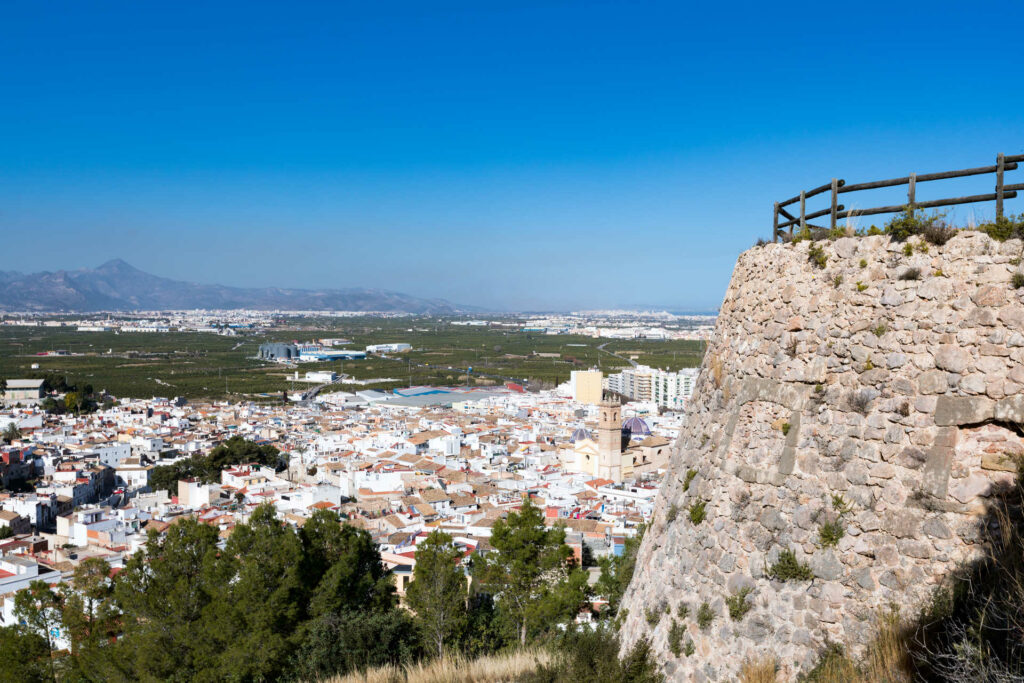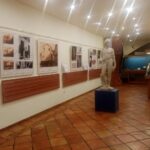Tucked away on Spain’s radiant Costa Blanca, the charming town of Oliva is steeped in history, with its cobbled streets and ancient structures narrating stories of civilizations past. Oliva is not merely a coastal retreat but a testament to the various cultures that have flourished here. This article delves into the historical monuments and landmarks that stand as silent sentinels to Oliva’s rich heritage, offering a journey through time for any visitor with a penchant for history.
The Castle of Santa Ana
Perched on a hill overlooking Oliva is the Castle of Santa Ana, a once-imposing fortress that now offers a window into medieval times. Although in ruins, the castle’s remnants speak of a time when it was a pivotal defensive bastion. Visitors willing to trek up the hill are rewarded with panoramic views of Oliva and the Mediterranean Sea, a vista that conjures images of lookouts scanning the horizon for incoming ships. The walk up to the castle is an immersion in history, with the path flanked by walls that have withstood the test of time.
The Old Town and Its Moorish Legacy
Oliva’s Old Town, or ‘El Raval’, is a historical quarter that exudes the essence of its Moorish legacy. Wandering through this area, one can admire the remnants of Moorish town planning, characterized by narrow, winding streets and whitewashed houses. The Old Town is not just an area but a chronicle of Oliva’s past, echoing with the footsteps of those who walked these lanes centuries ago.
The Parish Church of Santa Maria la Mayor
Dominating the skyline of Oliva is the majestic Parish Church of Santa Maria la Mayor. Built in the 17th century, this Baroque masterpiece is famed for its stunning façade and impressive bell tower. The church interior is equally awe-inspiring, with its grand altar and a series of artworks that depict various religious scenes. It serves as both a place of worship and a monument to the town’s religious fervor and artistic patronage through the ages.

The Archaeological Museum of Oliva
To truly grasp the depth of Oliva’s history, one must visit the Archaeological Museum. Housed in a beautiful 18th-century townhouse, the museum is a treasure trove of artifacts, ranging from ancient Iberian ceramics to Roman coins and medieval weaponry. Each exhibit is a piece of the puzzle that forms Oliva’s past, providing insights into the daily lives of its ancient inhabitants.
The Roman Kiln of the Brothers of Sant Crist del Sudari
A little-known but fascinating historical site is the Roman kiln found in the Brothers of Sant Crist del Sudari area. This ancient kiln was once used for pottery and brick making, an industry that thrived in Roman times. The site has been well-preserved, allowing visitors to study the ingenuity of Roman engineering and the industrial activities that took place in Oliva over two millennia ago.
The Hermitage of Our Lady of Rebollet
Located just outside the town center is the Hermitage of Our Lady of Rebollet, a spiritual sanctuary that has been a site of pilgrimage since the 15th century. This quaint hermitage, with its simple yet elegant design, reflects the devotional practices of the time and is still an active center of worship, connecting the present with the past.
Torre de la Galera
Torre de la Galera, once a watchtower built to guard against pirate invasions, stands as a reminder of Oliva’s strategic coastal importance. Although much of the structure has succumbed to time, the base of the tower remains, allowing one to envision the lookout’s vigilant watch over the azure waters.
Oliva’s Ancient City Walls
While much of Oliva’s ancient city walls have disappeared, portions still stand, particularly near the historic Old Town. These remnants serve as a physical narrative of the town’s fortifications and the historical significance of protecting its citizens from invasions and attacks. The walls are a symbol of the town’s resilience and strategic might in historical contexts.

Plaza de la Iglesia and Town Hall
The heart of Oliva’s public life can be felt in the bustling Plaza de la Iglesia, anchored by the Town Hall, a building that blends historic architecture with the responsibilities of modern governance. The square itself is a monument to social cohesion, echoing with the voices of the community and the clatter of everyday life, much like it has for generations.
Conclusion: A Mosaic of Time
Oliva’s historical monuments and landmarks are not merely stones and relics; they are the living narrative of a community that has thrived through epochs. They bear witness to the town’s evolution from an Iberian settlement to a modern-day haven for history buffs and culture enthusiasts. These landmarks are the keepers of stories, waiting to be discovered by those who seek to unravel the past and understand the present. A visit to Oliva is incomplete without paying homage to these testaments of time, for in them lies the true essence of this Spanish town’s spirit and tenacity.





